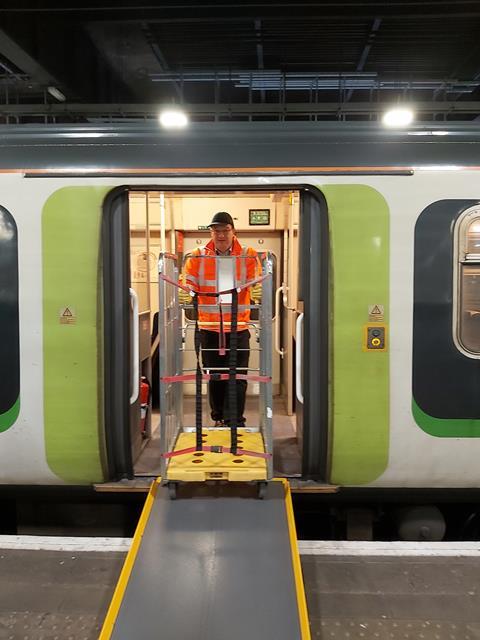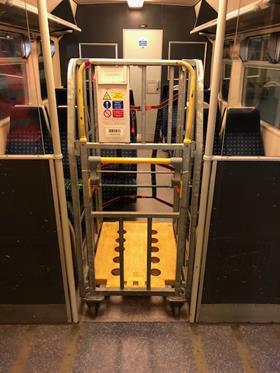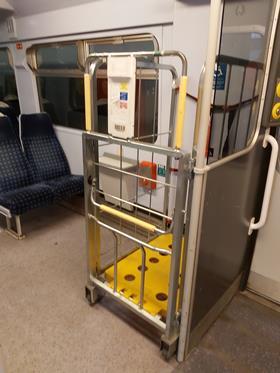
UK: GB Railfreight has trialled the use of a commuter EMU for express delivery of parcels, with a view to delivering urgent medical supplies to major hospitals during the Covid-19 pandemic.
A Class 319 EMU normally deployed on local passenger services on the West Coast Main Line was operated into London Euston carrying standard York roll cages which could easily be loaded and unloaded at most stations. According to GBRf, the 160 km/h EMUs could carry significant volumes of parcels if the seats were removed.
The operator says it is now in discussion with the government about how such a service could play a role in helping to meet the logistical challenge of delivering supplies to UK hospitals.

As well as strengthening supply chains during the coronavirus crisis, it points out that reinstating parcel services to main line stations could provide online retailers with a more sustainable and reliable option for overnight deliveries to the heart of major cities. The once extensive service of parcels services that used to operate across the UK rail network largely disappeared in the 1980s, apart from a handful of EMUs derived from the Class 319s which are used by Royal Mail to move post between dedicated terminals.

‘We are committed to continuing to help the UK get through this period by ensuring that vital supplies are delivered’, said GBRf Managing Director John Smith. ‘Rail freight has the advantage in being able to efficiently move very large volumes of goods in a safe and reliable way. This successful trial shows how the railways can play their role in helping the speedy delivery of vital supplies and we are keen to be able to do our bit to help the NHS meet the logistical challenge of keeping our hospitals supplied during this period of huge demand.
‘Post-crisis, these services could play a role in reducing air pollution and carbon emissions, with parcels being brought into the heart of cities by train overnight and last-mile deliveries then undertaken by electric powered vehicles.’



